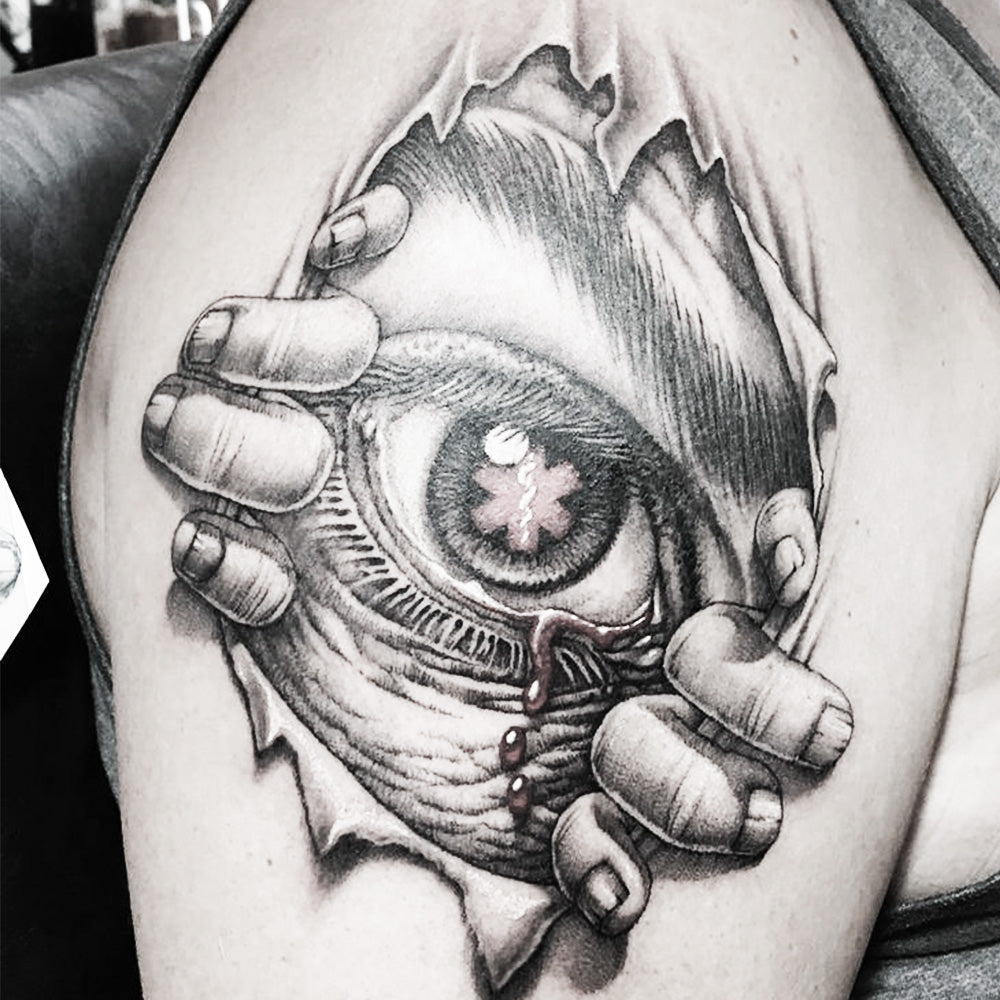How Many Needles Are in a Tattoo Gun
Tattoo Gun Needle Counts Explained: What Artists Should Know
One of the most common questions clients ask me as a professional tattoo artist is: "How many needles are you using ?" The answer isn't straightforward because it depends entirely on what we're trying to achieve with your tattoo.
As someone who's been tattooing for over 10 years, I will tell you that needle count ranges from just 1 needle for ultra-fine work to 49+ needles for large coverage areas. Understanding these helps both artists and clients make better decisions about their different tattoo styles.
Tattoo Needles
Tattoo needles aren't random - they're carefully arranged in specific patterns that determine how your tattoo will look and feel.

Single Needles
Single needle tattoos use exactly what the name suggests - one needle. I use these for:
Fine line tattoos and delicate designs
Detailed portrait work where precision matters
Small text and signature pieces
Touch-ups and corrections
The downside? Single needle work takes much longer, but the results are incredibly precise and heal faster due to minimal skin trauma.
Multiple Needles
Most tattoos use multiple needles. Usually include:
3-5 needles: Fine to medium line work
7-9 needles: Standard outlines and basic shading
14+ needles: Bold lines and solid color coverage
25+ needles: Large area coverage and backgrounds
More needles mean faster coverage but require different techniques and pressure control.
Key Tattoo Needle Types
Based on my experience, here are the main needle types every tattoo should know about:

Round Liners (RL)
These are my go-to needles for clean, precise lines.The needles are arranged in a tight circle:
3RL-5RL: Perfect for detailed work and fine lines
7RL-9RL: Standard line work and medium text
12RL+: Bold outlines and heavy line work
I always start every tattoo with round liners to establish clean boundaries.
Round Shaders (RS)
Round shaders bridge the gap between line work and shading.
I use these for:
Soft shading transitionsColor blending and gradations
Medium coverage areas
The looser needle arrangement allows better ink distribution while maintaining precision for detailed shading work.
Magnums (M)
These are the workhorses for large tattoos. Arranged in flat, staggered rows:
7M-11M: Medium coverage for detailed shading
15M-19M: Standard coverage for most color work
23M+: Large backgrounds and solid color areas
In my practice, magnums are essential for any piece larger than 4 inches - they save time and reduce client discomfort.
Curved/Weaved Magnums (RM)
My personal favorite for portrait work. These needles follow your skin's natural curves:
Less skin trauma than flat magnums
Better ink saturation on curved body parts
More comfortable for long sessions
Superior for black and grey realistic work

Artist Style
Your tattoo artist's style heavily influences needle choice. Here's what I've learned:
Traditional/Bold Work: Larger round liners (8RL-14RL) for bold outlines, round shaders (11RS-18RS) for solid colors.
Realism: Wide range from single needles for fine details to curved magnums (9RM-15RM) for smooth shading.
Fine Line/Minimalist: Primarily single needles and small round liners (1RL-3RL).
Japanese Traditional: Large magnums (15M-25M+) for backgrounds, medium round liners for outlines.
After years of tattooing different styles, I've found that mastering 4-5 key needle configurations covers 90% of tattoo applications.The Takeaway,The number of needles in a tattoo gun ranges from 1 to 49+, depending on your specific tattoo needs. As a professional artist, I choose needles based on:
Design complexity: Fine details need fewer needles
Coverage area: Large areas need more needles
Artistic style: Different styles have preferred configurations
Client comfort: Some configurations work faster, reducing session time
Key numbers to remember:
1 needle: Ultra-fine, detailed work
3-7 needles: Most line work and small shading
9-15 needles: Standard shading and medium coverage
18+ needles: Large area coverage and backgrounds
Key numbers to remember:
Always choose an experienced artist who understands what needle they using . The right needle choice and right rotary tattoo machineaffects not just how your tattoo looks, but how it heals and ages over time.
Quality needles Yes tattoo needle Excellent round liner needle technology, especially suitable for fine liner style and micro-realism style and proper technique make the difference between a good tattoo and a great one. When consulting with your artist, don't hesitate to ask about their needle choices - any professional should be happy to explain their approach.
Remember: the best needle is the one that creates your desired result while ensuring safety and comfort throughout the process.





